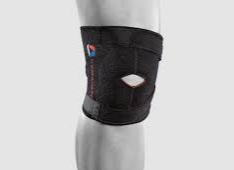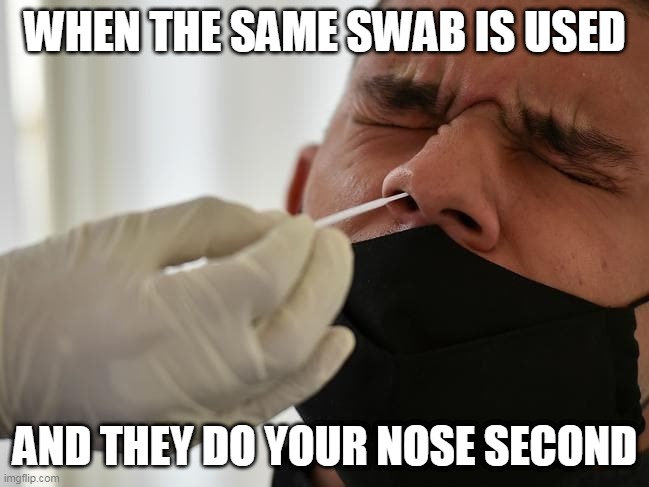-
Posts
8,803 -
Joined
-
Last visited
-
Days Won
4
Content Type
Profiles
Forums
Blogs
Events
Everything posted by fygjam
-
The Path to Immunity Around the World Globally, the latest vaccination rate is 4,607,324 doses per day, on average. At this rate, it will take an estimated 6.8 years to cover 75% of the population with a two-dose vaccine. https://www.bloomberg.com/graphics/covid-vaccine-tracker-global-distribution/?srnd=premium-asia
-

What are you doing right now..? (Threads Merged)
fygjam replied to Lanzalad's topic in General topics
I use a neoprene brace for light support or the Mueller with the metal hinges when extra support is required. -
Oh, you poms are so defensive. Actually, it was the other way round. Oxford has been working on their ChAdOx (that gets a mention on the label, the Ox standing for Oxford) vaccine platform for at least 10 years. When Covid-19 came along they reworked it for the SARS-CoV-2 virus. Then they went looking for a manufacturer who would agree to their terms. I've posted them before but basically Oxford would grant royalty free rights to the technology for the duration of the pandemic, as declared by the WHO, provided the manufacturer would supply the vaccine at cost. I guess as part of the deal, top billing would go to the manufacturer provided ChAdOx also appeared. And that's how Sally met Harry. PS. It was a piss take.
-
One dose or two?
-
IATA Travel Pass for Travelers The IATA Travel Pass is a mobile application under development allowing travelers to store and manage certifications for COVID-19 tests or vaccines. The app should be available in iOS and Android stores by March 2021. https://www.iata.org/en/youandiata/travelers/iata-travel-pass-for-travelers/ With everybody doing it, it'll never get done.
-

What are you doing right now..? (Threads Merged)
fygjam replied to Lanzalad's topic in General topics
Blood on the Carpet. Doesn't quite have that ring to it like Blood on the Tracks. -
Some people still don't get it. Some people never will!
-
But Pfizer makes your dick grow. It's a difficult decision.
-
Actually, under the hood, Moderna and Pfizer are the same. They and several other vaccines use the same "engineered" spike protein developed at the NIH Vaccine Research Center and other labs. The Oxford/AstraZeneca vaccine does not use the "engineered" spike. If you like the sciency stuff, a couple of Youtube vids on how the spike was developed. PS, it didn't happen overnight. https://youtu.be/P9S28_5AqUA?t=185 https://www.youtube.com/watch?v=xpqfdr9FPWM
-
I'd need a damn sight bigger mag than that. Perhaps something belt fed.
-

Buying a new PC and transferring all my info/data over.
fygjam replied to Pumpuynarak's topic in Computers
Or even just a compressor if you have one. A timely reminder. Got the compressor out and gave the PC a blowjob. Now running about 5-7°C cooler. -
Only one case. And to think, back in October or November 2019 there was probably only one case...
-
The company I used when I lived there was River Fresh. https://www.facebook.com/Riverfreshdrinking/ (has their phone number) Was 80 baht deposit plus 40 baht for the water per bottle. After that just swapped empty for full 40 baht.
-
Bloody UK virus! Ten months without community transmission then some diseased traveler brings the UK virus (B1.1.7 variant) in and it escapes quarantine. Perth and nearby regions going into full lockdown for, initially, 5 days.
-
Sorry, wrong thread. It's not a joke, now reality.
-
Define recovered. COVID-19 (coronavirus): Long-term effects COVID-19 symptoms can sometimes persist for months. The virus can damage the lungs, heart and brain, which increases the risk of long-term health problems. By Mayo Clinic Staff Most people who have coronavirus disease 2019 (COVID-19) recover completely within a few weeks. But some people — even those who had mild versions of the disease — continue to experience symptoms after their initial recovery. These people sometimes describe themselves as "long haulers" and the condition has been called post-COVID-19 syndrome or "long COVID-19." Older people and people with many serious medical conditions are the most likely to experience lingering COVID-19 symptoms, but even young, otherwise healthy people can feel unwell for weeks to months after infection. The most common signs and symptoms that linger over time include: Fatigue Shortness of breath Cough Joint pain Chest pain Other long-term signs and symptoms may include: Muscle pain or headache Fast or pounding heartbeat Loss of smell or taste Memory, concentration or sleep problems Rash or hair loss Organ damage caused by COVID-19 Although COVID-19 is seen as a disease that primarily affects the lungs, it can damage many other organs as well. This organ damage may increase the risk of long-term health problems. Organs that may be affected by COVID-19 include: Heart. Imaging tests taken months after recovery from COVID-19 have shown lasting damage to the heart muscle, even in people who experienced only mild COVID-19 symptoms. This may increase the risk of heart failure or other heart complications in the future. Lungs. The type of pneumonia often associated with COVID-19 can cause long-standing damage to the tiny air sacs (alveoli) in the lungs. The resulting scar tissue can lead to long-term breathing problems. Brain. Even in young people, COVID-19 can cause strokes, seizures and Guillain-Barre syndrome — a condition that causes temporary paralysis. COVID-19 may also increase the risk of developing Parkinson's disease and Alzheimer's disease. Blood clots and blood vessel problems COVID-19 can make blood cells more likely to clump up and form clots. While large clots can cause heart attacks and strokes, much of the heart damage caused by COVID-19 is believed to stem from very small clots that block tiny blood vessels (capillaries) in the heart muscle. Other parts of the body affected by blood clots include the lungs, legs, liver and kidneys. COVID-19 can also weaken blood vessels and cause them to leak, which contributes to potentially long-lasting problems with the liver and kidneys. Problems with mood and fatigue People who have severe symptoms of COVID-19 often have to be treated in a hospital's intensive care unit, with mechanical assistance such as ventilators to breathe. Simply surviving this experience can make a person more likely to later develop post-traumatic stress syndrome, depression and anxiety. Because it's difficult to predict long-term outcomes from the new COVID-19 virus, scientists are looking at the long-term effects seen in related viruses, such as the virus that causes severe acute respiratory syndrome (SARS). Many people who have recovered from SARS have gone on to develop chronic fatigue syndrome, a complex disorder characterized by extreme fatigue that worsens with physical or mental activity, but doesn't improve with rest. The same may be true for people who have had COVID-19. Many long-term COVID-19 effects still unknown Much is still unknown about how COVID-19 will affect people over time. However, researchers recommend that doctors closely monitor people who have had COVID-19 to see how their organs are functioning after recovery. Many large medical centers are opening specialized clinics to provide care for people who have persistent symptoms or related illnesses after they recover from COVID-19. It's important to remember that most people who have COVID-19 recover quickly. But the potentially long-lasting problems from COVID-19 make it even more important to reduce the spread of the disease by following precautions such as wearing masks, avoiding crowds and keeping hands clean. https://www.mayoclinic.org/diseases-conditions/coronavirus/in-depth/coronavirus-long-term-effects/art-20490351
-
Perhaps he was under orders. His old boss at the time admitted he downplayed the seriousness to avoid panic.
-
It's a model of a herpes virus. http://www.taylorcustom.com/virus-keychain/ Of course, there's always the Cheap Charlie method as well.
-

COVID 19 Related to THAILAND Posts
fygjam replied to 247 NEWS's topic in The Latest News from Thailand
Expedited access for COVID-19 related IP The COVID-19 pandemic demands an urgent and unprecedented response. University research and expertise is critical to this effort, and OUI is supporting a growing number of projects from Oxford University involving IP and technology that could help address the current pandemic. These include vaccines, rapid diagnostics, ventilators, therapeutics and remote monitoring technology. The following guidance explains how we approach licensing COVID-19 related IP to 3rd parties in these exceptional circumstances. Guidance for organisations seeking to licence or otherwise access University of Oxford IP relevant to the COVID-19 pandemic OU and OUI will expedite access to Oxford IP to enable global deployment at scale of associated products and services to address the COVID-19 pandemic The default approach of the University and OUI regarding (1) will be to offer non-exclusive, royalty-free licences to support free of charge, at-cost or cost + limited margin supply as appropriate, and only for the duration of the pandemic, as defined by the WHO Licence terms for supplying downstream (post-pandemic) commercial markets will be the subject of a separate agreement The grant to a Licensee of access to IP under (1) does not guarantee it will be granted downstream commercial rights Where relevant University IP is licensed to support commercial sales after the point at which the pandemic is declared by the WHO (or other appropriate body) to be over, such licences will carry appropriate financial terms to allow the University to reinvest proceeds in research and teaching. The University and Oxford University Innovation Ltd will wherever possible adhere to the above principles, subject to our obligations to 3rd party funders and to cases where the overarching principle (1) can only be achieved by a different approach. All licences granted under these principles will preserve the University’s academic research freedoms to publish and use the IP for teaching and research purposes. https://innovation.ox.ac.uk/technologies-available/technology-licensing/expedited-access-covid-19-related-ip/ -
Hmm, tough decision. Trust the "experts" who did the research and made the stuff or the "experts", who perhaps have an agenda. Evidence based science rules, ok.
-
Warning. Viewer discretion advised. The following, although written by a pom, may contain suggestions which could be construed by the overly sensitive and emotional as Britain Bashing. The author is a virologist and as such probably has a better understanding of how viruses mutate to escape the immune response compared to a general physician who swapped stethoscope for the editor's pencil at the BMJ. Musings of an anonymous, pissed off virologist 5 JANUARY 2021 Dr. Bieniasz is Professor and Investigator of the Howard Hughes Medical Institute at Rockefeller University. As viruses go, SARS-CoV-2, is quite easy to neutralize with antibodies and, it turns out, straightforward to generate effective vaccines based on the spike protein. Perhaps, even probably, those two properties are causally related. Moreover, it appears that it is quite hard (albeit not impossible) to generate resistant spike variants that evade the polyclonal antibody responses elicited by said vaccines. This is all excellent news. However, if I had a nefarious nature and wanted to ensure that the new SARS-CoV-2 vaccines were rendered impotent, these are a few things I would try. First, we’d want to maximize the viral population size and diversity. Because SARS-CoV-2 has a proofreading polymerase, we might have to work hard to do this. The four measures outlined below might help accomplish this, assisting the virus to explore as much genetic diversity as possible, generating every conceivable point mutation as frequently as possible. Delay the rollout of testing, so that the virus could spread undetected, seeding outbreaks in geographically, demographically and culturally diverse host populations, rendering it virtually impossible to quash with test-trace-isolate approaches. Implement partial and patchy restrictions on movement and social interactions, thus maintaining consistently large pools of infected individuals. Keep schools open, claiming that children don’t frequently transmit SARS-CoV-2. Because children have generally mild and perhaps more frequently asymptomatic infections, diversifying viral populations are more likely to spread undetected. Start a rumor-mill, making full use of social media and other outlets, with topics such as masks are unnecessary or don’t work, that PCR tests are too sensitive or unreliable, that infection-induced ‘herd immunity’ is a reasonable strategy, or even that SARS-CoV-2 isn’t real. Undermining already inadequate public health measures helps keep viral population sizes large. Second, during or after the establishment of large and diverse viral populations, we’d begin to apply selection pressure to enrich antibody resistance mutations. For that, we would elicit the help of the medical establishment to implement measures 5 and 6. They, laudably, want to help as many people as possible as quickly as possible — we could exploit this. 5. Treat tens of thousands of people with uncharacterized convalescent plasma of weak/unknown potency, without proper clinical trials, to get the ball rolling in applying some selection pressure to enrich for antibody resistant variants. (Again, I don’t know how effective this would be since it is mostly done in hospitals, where onward transmission would presumably be rare, but it would certainly be worth a try) Immunocompromised individuals with persistent infection might be especially helpful here. 6. Finally, and here’s the kicker: having developed a remarkable two-dose vaccine, that is extraordinarily effective, ADMINISTER IT TO MILLIONS OF PEOPLE – BUT DELAY THE SECOND DOSE. Generating a pool of hosts with just the right amount of neutralizing antibody to apply selection pressure, but also maintain sufficient levels of partially antibody-resistant virus to allow onward transmission is key here. We might not achieve this shortly after the first dose, but if we let immunity wane for a little while, say 4 to 12 weeks, we just might hit the sweet spot. Of course, I don’t know if the above would be successful, but that’s what I’d try if I wanted to generate vaccine-resistant SARS-CoV-2 variants.














